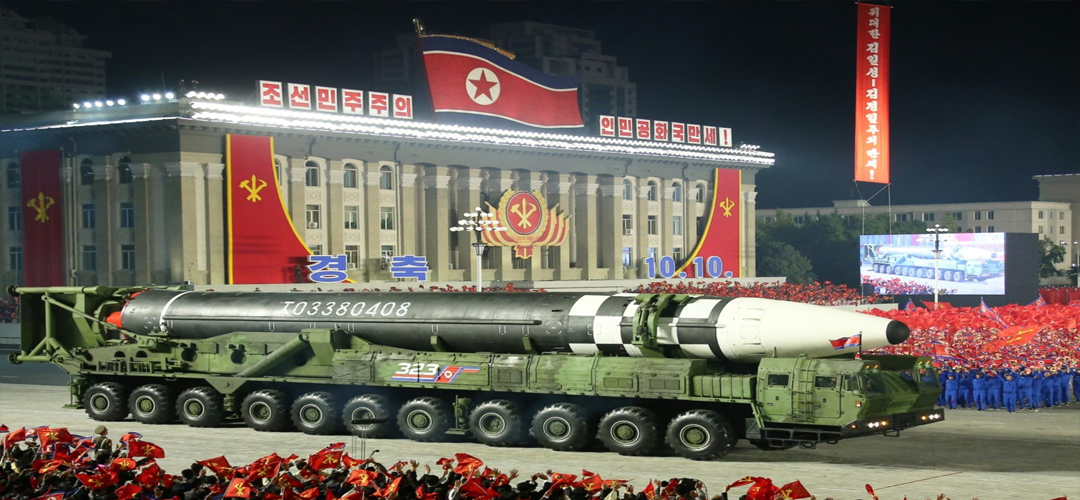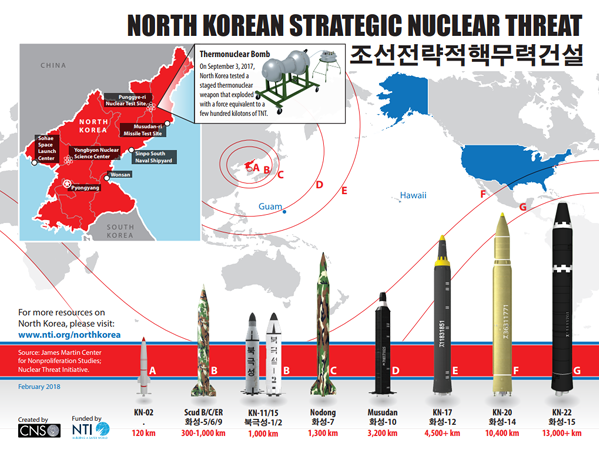A Nuclear Wake-up Call?
February 11, 2023 | Expert Insights

Nothing brings back the horrific fear of a nuclear winter, a persistent nightmare of the Cold War era, more than the ongoing, senseless war in Eastern Europe. As the two Eastern Slavic cousins batter each other senseless, egged on by the West, Moscow rattles its nuclear sword to keep NATO at bay.
Encouraged by the immunity afforded by nuclear weapons by rogue nations like North Korea, many more aspirants line up to join the nuclear club, overtly and covertly. The recent statement by the South Korean President to look at a nuclear option only adds to the fear of growing nuclear stockpiles, many in the hands of unstable regimes. Then there are closet nuclear powers like Israel and South Africa, which are a few turns of the screwdriver away from a full nuclear state!
So, while climate change may get all the media focus, the danger of nuclear conflagration causing planet earth to self-destruct remains a distinct possibility. Therefore, it came as no surprise when the Bulletin of Atomic Scientists recently advanced the Doomsday Clock to 90 seconds before midnight!
Background
The Bulletin of the Atomic Scientists' Doomsday Clock, developed in 1947, is a metaphor for the possibility of a global calamity brought on by nuclear weapons, climate change, and other new technology. It urgently calls upon the top global decision-makers to prevent such an eventuality.
Sadly, more than seven decades after the first nuclear device was used to slaughter fellow human beings, the danger of a nuclear apocalypse has not diminished.

Analysis
Today, North Korea contributes more to nuclear tensions than any other responsible nuclear power. The ever-increasing number of ballistic missiles, alarmingly close to the Japanese archipelago and the possibility of an imminent seventh nuclear test, a much more powerful thermonuclear one, has kept the Korean peninsula and the rest of the world on edge.
The Biden administration is adopting a "strategic patience" policy, continuing diplomatic relations with North Korea but stepping up military deterrence and outside pressure.
North Korea has long been a pawn in the larger power play between the U.S. and China. China intends to leverage Russia and North Korea into a 'Northern Triangle' as a bulwark against the military threat posed by the powerful U.S. military and its allies in East Asia.
While economic considerations may have inhibited Tokyo from fully committing its significant military capacity against China, Japan is tentatively moving towards greater militarisation and a more pronounced anti-China stance. By amending its post-World War pacifist constitution to increase defence spending, willingness to participate in foreign military missions and engaging regional powers like India and Australia in multi-dimensional military drills, Japan has demonstrated its recognition of the military threat posed by China in the Indo-Pacific. However, what inhibits the Japanese is the fear of attracting criticism from a host of Asian nations led by China for reworking its brutal imperial past.
Seoul, a modern, prosperous and technically superior manufacturing and electronics power, remains a lynchpin in this big power game. Despite Seoul's historically close ties with Washington, Beijing has always harboured high hopes for Seoul's pragmatic decisions concerning its exterior allegiance. While the government of Yoon Suk Yeol, who took office in 2022, has focused on deterrence and security cooperation with the U.S., his predecessor President Moon tried to strike a diplomatic balance between the U.S. and China. But before China can extract any major diplomatic concessions from Seoul, it has to first rein in Kim Jong-un's unbridled taste for nuclear sabre rattling, including the imminent nuclear test; only China wields the influence to dissuade the strong man in Pyongyang from this.
The sheer lack of progress in nuclear disarmament has disenchanted and disillusioned the non-nuclear weapons states (NNWS) lobby, the 'have nots', and may force many nations with the economic and technical capacity to review their nuclear options. As nuclear-weapon-states (NWS) add to their already burgeoning strategic arsenals, endangering the entire planet and arms control treaties are rendered redundant or obsolete, a world free from nuclear weapons appears remote, if not unrealistic.
However, the world has not entirely given up trying to make sense of the prevailing nuclear madness. In this context, emphasising nuclear risk reduction measures is a critical step forward. This appeals to both sides of the nuclear divide as the pursuit of nuclear risk reduction and disarmament efforts are not mutually exclusive, according to the Nuclear Non-Proliferation Treaty (NPT) RevCon 2022.
"Risk reduction" refers to acts, words, or agreements that lessen the likelihood of using nuclear weapons. Reducing risks is a crucial step toward getting rid of weapons and building stability and trust among the NWS. Risk reduction strengthens the NPT regime, despite criticism that it is a diversion from disarmament.
Western nuclear powers like the U.S. and the UK claim to be working on implementing a thorough risk reduction programme with secure communication channels and scaling down the arms race. However, several NNWS have doubts about the NWS' sincerity regarding disarmament and have advised against the risk reduction strategy. Concerns have also been raised about the P5 countries' inconsistent domestic politics and the lack of precision in their nuclear risk reduction strategy.
Assessment
- The P5 must adopt a problem-solving strategy for reducing nuclear risk. This strategy should include strong crisis communication tools, increased openness, and an emphasis on preventing errors and escalation.
- The Stockholm Initiative developed a "Nuclear Risk Reduction Package" to give the P5 a clear road map for removing and reducing nuclear risks. Declaratory wording, unequivocal promises from the NWS and other NPT states, and a detailed methodology for follow-up work within the NPT framework are all included in the package. This could be the template of a working model to slow down the doomsday clock!
- The NPT may have slowed down the development of nuclear weapons by many more countries but has contributed little to nuclear disarmament. As modern nuclear devices get smaller and deadlier, with a host of new vectors on the anvil, including a near-immune space-based hypersonic missile, they have enhanced nuclear risks. Therefore, there is no alternative to a total ban on nuclear weapons, the sooner, the better.








Comments